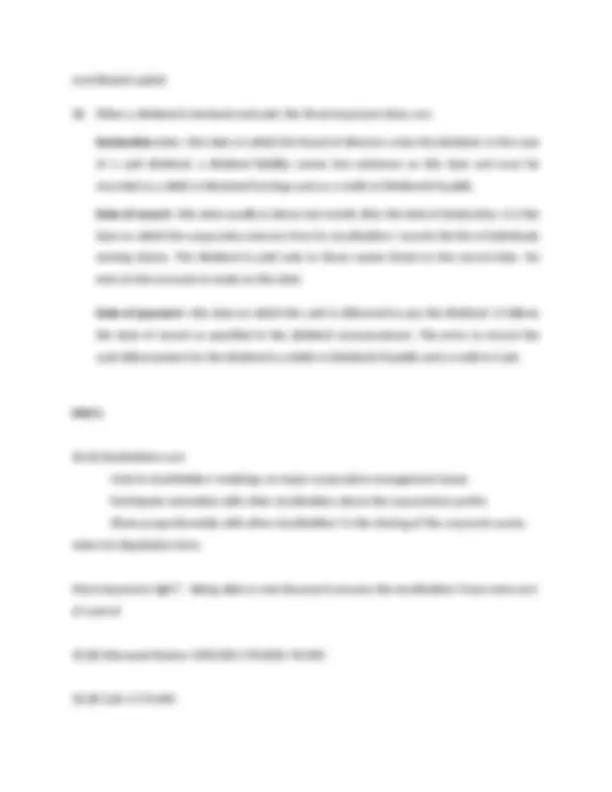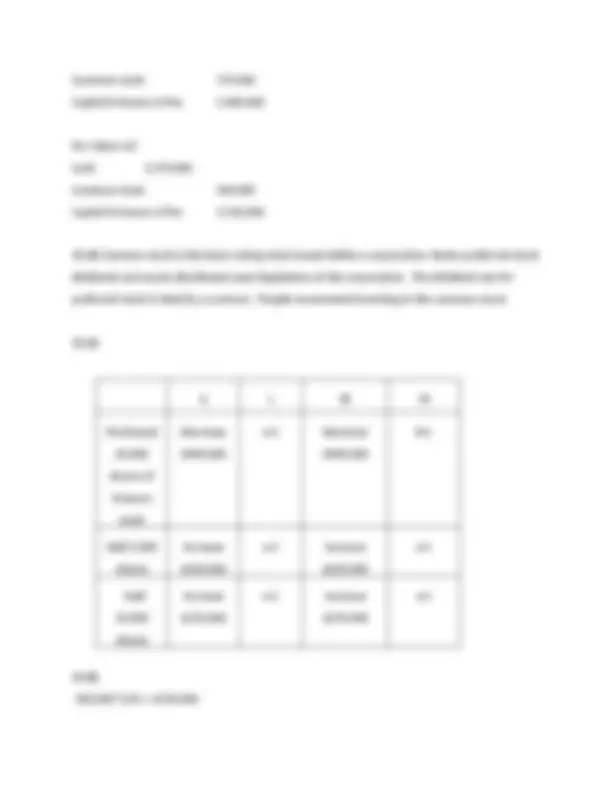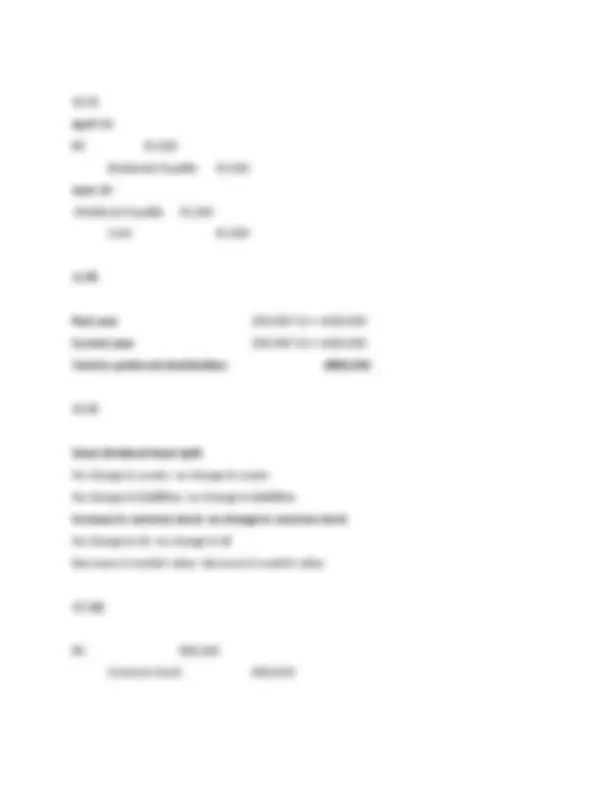





Study with the several resources on Docsity

Earn points by helping other students or get them with a premium plan


Prepare for your exams
Study with the several resources on Docsity

Earn points to download
Earn points by helping other students or get them with a premium plan
Community
Ask the community for help and clear up your study doubts
Discover the best universities in your country according to Docsity users
Free resources
Download our free guides on studying techniques, anxiety management strategies, and thesis advice from Docsity tutors
Notes on various corporate finance vocabulary and concepts, including legal capital, no-par value stock, treasury stock, declaration date, record date, stock dividend, stock split, preferred stock, and dividends. It also includes explanations of the rights and preferences associated with preferred stock.
Typology: Study notes
1 / 5

This page cannot be seen from the preview
Don't miss anything!




Liana Casciani Chapter 11 Notes Vocab Legal capital- permanent amount of capital defined by state law that must remain invested in the business; cushion for investors No-par value stock- Capital stock that has no par value specified in the corporate charter Treasury stock- Corporations own stock that has been issued but subsequently reacquired and is still being held by corporation Declaration date- date which the board of directors officially approves dividends Record date- date which corporation prepares list of current stockholders as shown on records; dividends can be paid only to share holders who own stock on that date. Stock dividend- distribution of additional shares of a corporations won stock Stock split- increase in total number of authorized shares by a specified ratio: doesn’t decrease retained earnings Preferred stock- stock that has specified rights over common stock Current dividend preference- feature of preferred stock that grants priority on preferred dividends over common stock dividends Cumulative dividend preference- preferred stock feature that requires specific current dividends to not be paid in full 2 accumulate for every year they are not paid. Must be paid before common stock is issued. Dividends in arrears- Dividends on cumulative preferred stock that have not been declared in prior years. M/C 1.c 2.d 3.b
4.a 5.c 6.b 7.c 8.c 9.d 10.a Questions-
2. The charter of a corporation is a legal document from the state that authorizes its creation as a separate legal entity. The charter specifies the name of the entity, its purpose, and the kinds and number of shares of capital stock it can issue. 5. Par value is a nominal per share amount established for the common stock and/or preferred stock in the charter of the corporation, and is printed on the face of each stock certificate. 6. The usual characteristics of preferred stock are: (1) dividend preferences, (2) conversion privileges, (3) asset preferences, and (4) nonvoting specifications. 8. Stockholders’ equity is accounted for in terms of source. This means that several accounts are maintained for the various sources of stockholders’ equity, such as common stock, preferred stock, contributed capital in excess of par, and retained earnings. 9. Treasury stock is a corporation’s own capital stock that was sold (issued) and subsequently reacquired by the corporation. 12. Cumulative preferred stock has a dividend preference such that, should the dividends on the preferred stock for any year, series of years, not be paid, dividends cannot be paid to the common stockholders until all such dividends in arrears are paid to the preferred stockholders. Noncumulative preferred stock does not have this preference; therefore, dividends not paid in past periods will never be paid to the preferred stockholders.
Common stock 170, Capital in Excess of Par 3,400, Par Value :$ Cash 3,570, Common stock 340, Capital in Excess of Par 3,230, 11-4) Common stock is the basic voting stock issued within a corporation. Ranks preferred stock dividends and assets distributed upon liquidation of the corporation. The dividend rate for preferred stock is fixed by a contract. People recommend investing in the common stock. 11-5) A L SE NI Purchased 20, shares of treasury stock Decrease $900, n/c Decrease $900, b/c Sold 5, shares Increase $250, n/c Increase $250, n/c Sold 10, shares Increase $370, n/c Increase $370, n/c 11-6) 200,000*$.65 = $130,
April 15- RE 65, Dividends Payable 65, June 14- Dividends Payable 65, Cash 65, 11-8) Past year 200,000$2 = $400, Current year 200,000$2 = $400, Total to preferred stockholders $800, 11-9) Stock Dividend-Stock Split No change in assets- no change in assets No change in liabilities- no change in liabilities Increase in common stock- no change in common stock No change in SE- no change in SE Decrease in market value- decrease in market value 11-10) RE 800, Common Stock 800,